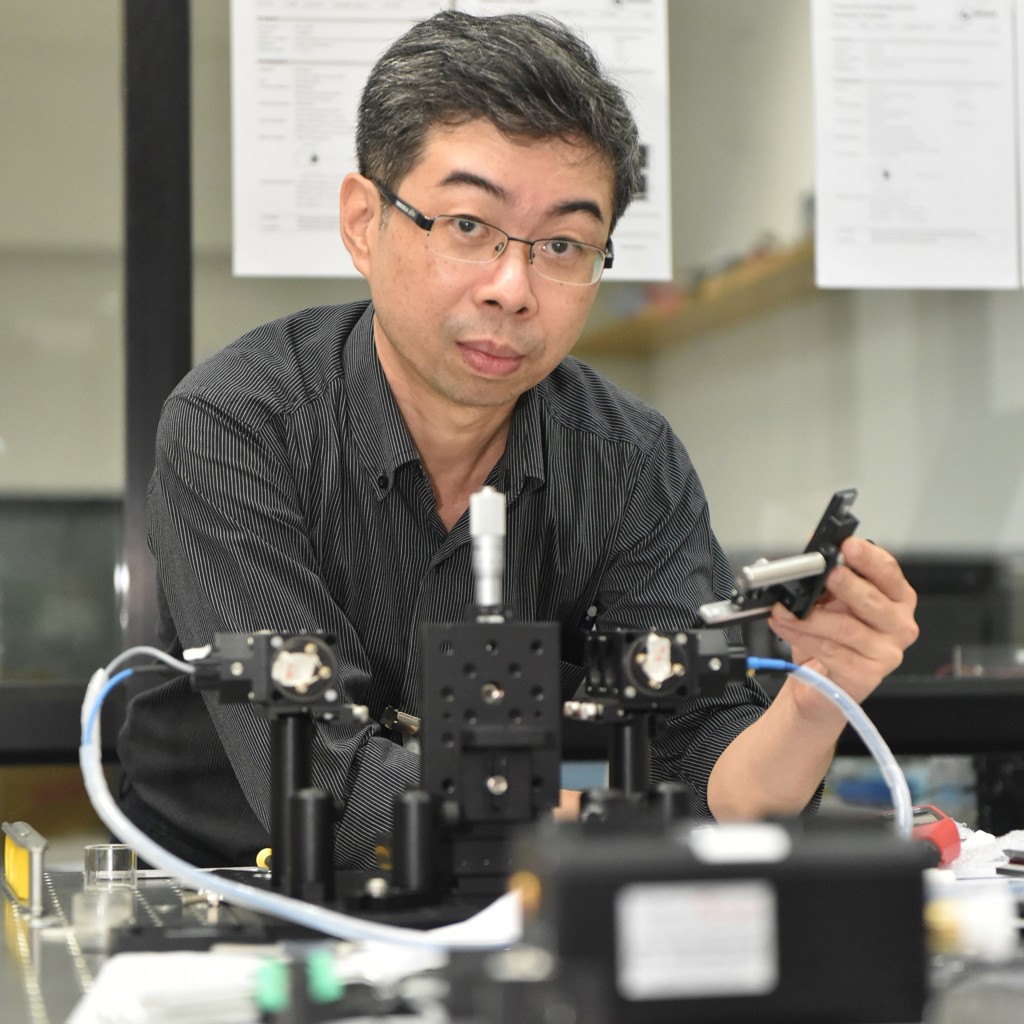Sarun Sumriddetchkajorn
National Electronics and Computer Technology Center (NECTEC), ThailandFor outstanding contribution to photonics engineering especially for innovative implementation of biomedical devices, fiber-optic components, and sensing systems.

Using scientific and technological knowledge to develop solutions to society’s problems is how Sarun Sumriddetchkajorn sees his research impacting the public. As the Executive Director of the National Electronics and Computer Technology Centre (NECTEC) in Thailand, Sarun and team listen to the concerns of Thai citizens and use optics and photonics to solve everyday problems and improve life in Thailand. He says they often work backwards – starting with the desired outcome and then figuring out how to achieve it using current technology.
Growing up, and even through his early career, Sarun did not have a mentor or even an interest in optics and photonics. He was curious about how light bulbs and motors worked which led to an interest in electronics, which eventually evolved in optics and photonics. He was introduced to OSA for the first time as an assistant researcher at NECTEC through its monthly membership magazine, Optics & Photonics News, and, although he did not always know a lot about all the topics, he found the content fascinating.
As a graduate student at the University of Central Florida’s College of Optics and Photonics (CREOL), he was a student member of OSA and attended and presented his work at various OSA conferences. Attending conferences helped him to learn more about the field and to advance his career.
Sarun says that it is important to observe and study the way other scientists and engineers work in order to better understand the process. Although he does not participate in research directly since becoming NECTEC’s Executive Director, he still consults with the photonics lab and encourages the researchers to be open-minded and look at what is going on in the world to see how optics and photonics can solve public problems. Many different fields can benefit from optics and photonics, Agriculture, Health care, and Homeland security are three of the core areas for which his team develops solutions.
An example of problem solving was the development of the Thai Jasmine Rice Identification System. This system allows for a faster identification time, a lower rate of inaccuracy, and a chemical-free analysis for rice growers. It also combines three different facets of the optics and photonics field: fluorescent imaging, image processing, and signal processing. This development solved rice grain identification problems and improved the rice-growing capabilities, thus providing more rice for consumers, while also combining different areas of optics and photonics. Sarun explains that it is important for researchers to work together as different fields have different technologies that can contribute to solving public problems. He encourages young researchers to take advantage of available technological advances and think outside the box in terms of the capabilities and applications of optics and photonics research.
Profile written by Jeanette Gass
